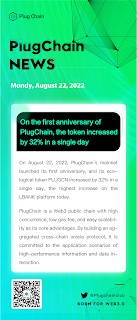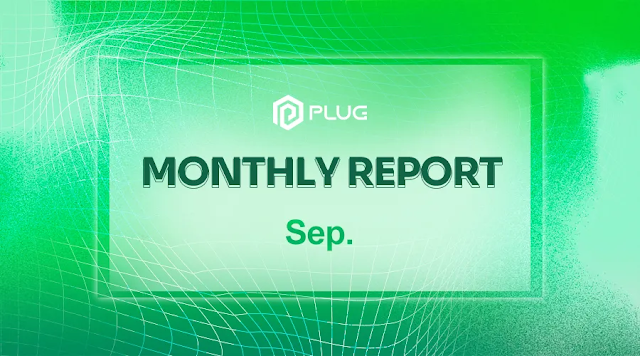A Brief Introduction to Oracles: The Cornerstone of Trust in the Blockchain World
In fact, the main source of trust in the blockchain is oracles.
Like any computer system, the blockchain processes data, but there are two sources of data in the blockchain world: data that is already on the blockchain, and data that is not.
So how does the blockchain obtain data from outside? The answer lies in oracles, which are intermediaries that transfer data from the real world to the blockchain. Oracles play a critical role in ensuring the security and reliability of the entire blockchain system by collecting and verifying data from multiple sources. Without oracles, the blockchain would be limited in its real-world applications.
Clearly, oracles are necessary when a smart contract requires data from outside the blockchain. The smart contract requests the data from the oracle, which then retrieves the data from off-chain sources and relays it back to the smart contract.
1. Oracles: The Foundation of Trust
In the world of blockchain, oracles are extremely important.
Without oracles, the development of blockchain would be limited to the scope of data that is already on the chain, which clearly does not meet our expectations for it. To illustrate, let’s compare the internet to blockchain. The internet also relies heavily on off-chain data sources, but it does not encounter the same oracle problem as blockchain.
The root of this difference lies in the fact that traditional internet systems are centralized, meaning that users choose to trust a central entity to provide data. This shifts the trust issue from the data to the central entity, and the process of data “going online” is handled by the centralized servers. Of course, users can choose not to trust the central entity.
On the other hand, blockchain is a decentralized structure that requires the creation of a trustless system. Trust is established on a transparent mechanism and an open-source code implementation of that mechanism. This means that centralized entities cannot use users’ need for trust to build monopolies and act with impunity within those monopolies.
The manifestation of the oracle problem lies in the fact that it is not difficult to put off-chain data on-chain using an oracle, and a simple read-write operation can feed off-chain data to an on-chain contract. However, building trust is difficult, and the oracle needs to use technology and mechanism design to ensure that the data it provides meets the user’s trust requirements.
Therefore, functionally speaking, the oracle solves the data problem, but fundamentally speaking, the oracle needs to solve the trust problem. This is precisely why the internet does not have a “data onboarding” problem, while blockchain does have a “data on-chain” problem.
2. Design Principles of Oracle
Once we understand that the core of the oracle is to solve the trust problem, we can understand the main differences in the design approaches of various oracles, which lie in their different “trust production mechanisms.”
According to the different sources of trust, the mainstream oracle solutions can be classified into the following three categories:
• Data provided by trusted centralized sources, such as Provable.
• Data provided by distributed nodes, such as Chainlink and PlugChain.
• Data provided by trusted consortia, such as Maker’s oracle.
Before we dive into the specific implementations of different types of oracle, there are several points that are worth noting and discussing:
The role of a oracle is not to provide “true data”, but to provide “trusted data”. “True” is a subjective and difficult-to-evaluate concept, and there may be no tool in the world that can guarantee “true” output. It is not realistic to expect oracles to provide true data. Instead, we can design mechanisms to increase the degree of trust. If we demand that oracles provide true data, it is easy to fall into the trap of the oracle paradox and the blockchain paradox, as they cannot meet our requirements for truth.
Different application scenarios have different requirements for trust. Not all data needs to be put on-chain with the highest degree of trust guarantee. This involves the cost of trust and is related to the importance of data trustworthiness, the motivation for data falsification, and other dimensions.
The source/support of trust varies depending on the application scenarios, and therefore, it cannot be assumed that a certain trust production mechanism results in the best trust, while others result in poor trust.
As a result, when observing oracle projects, the focus should be on how they produce trust and whether the provided trust meets the requirements of their application scenarios.
The design of an oracle also involves another important issue, which is the data source problem, i.e., where the oracle’s data provider obtains data. There are two types: one is to obtain data from a single data source, and the other is to obtain data from multiple data sources.
3. Deconstructing Decentralized Oracles
Let’s start by looking at the source of trust and understanding the specific implementation of different types of oracles.
Oracles are an important infrastructure for blockchain, but they are not a “magical” technology. In fact, their function is to bring off-chain data to on-chain applications. Regardless of the type of oracle, it is just a different implementation form of the data provider.
We can imagine a small town where there is a large clock displaying the time (data source), and a blind person living in the town (blockchain application) who wants to know the time. However, since the blind person cannot see the clock, there needs to be someone who can tell him the time shown on the clock, and this person is the oracle.
Therefore, the issue of trust is what oracle needs to address.
Although the trustworthiness of a centralized oracle, which provides data from a trusted source, can be technically proven and secured, the risk of “data distortion” increases when the data source is too centralized. On the other hand, a decentralized oracle, which provides data from distributed nodes, secures its trustworthiness through its mechanism design. This is also often referred to as a decentralized oracle or a decentralized oracle network.
Clearly, decentralized oracles are better equipped to address the issue of trust.
Let’s go back to the example of the small town. A decentralized oracle network refers to a situation where everyone in the town can participate in telling the time. When the blind person asks for the time, these participants/nodes tell a statistician what time they see, and the statistician then tells the blind person the time that most people told him.
It is easy to see that the design of this type of oracle is consistent with the distributed thinking of blockchain. Therefore, it does not add new types of trust to applications on the blockchain, and not adding new types of trust keeps things from getting more complex. However, this method also has limitations. For example, it is relatively expensive because it requires payment to numerous participants, and it requires a network scale. The number and quality of participants and the credibility of the data are related.
Among them, PlugChain is an oracle of this type. Distributed oracle nodes/oracle service providers obtain data from dispersed data sources and submit the data to the on-chain aggregation contract of PlugChain. The contract calculates the data results via algorithms and sends the results to the blockchain application that requests the data. This approach undoubtedly adds a guarantee of trust to its on-chain data.
In summary, decentralized oracles ensure the secure transmission of data without any central point of failure or manipulation. Therefore, as an important tool for unlocking the potential of smart contracts, decentralized oracles will continue to play an increasingly important role in the development of more complex blockchain-based systems and applications in the future. Although still a nascent field, decentralized oracles are an exciting area in the development of blockchain technology, with many teams and projects dedicated to developing and strengthening this critical infrastructure.
In conclusion, as the demand for off-chain data in the blockchain continues to grow, the importance of oracles will become more pronounced. While oracles are an essential infrastructure for the blockchain, their development will not necessarily limit the development of the blockchain. In fact, it may be that the development of the blockchain has a greater impact on the development of oracles. Only when on-chain contracts have a broad, urgent need for off-chain data and are willing to pay for it, can oracles truly and comprehensively develop.







Comments
Post a Comment